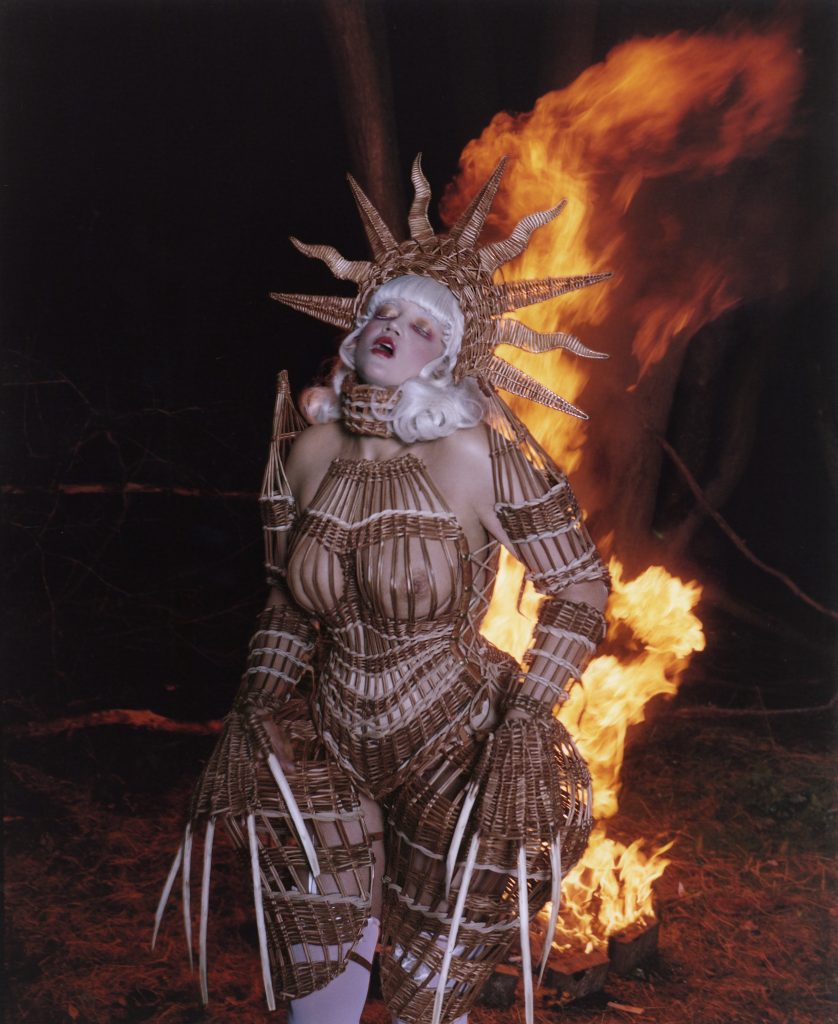
With an aesthetic rooted in fetishism and decorative style of Russian folk Karina Akopyan’s work features painting, photography and costume pieces, the series is a bold questioning of sexuality, religion, ritual, and iconography – in all their jarring coexistence yet inevitable convergence. Debating the preservation of values and traditions, as either a beautiful necessity or, rather, a deceleration of progress, Karina’s work is also a dissection of a subconscious personality and multicultural identity. “Wicker Woman was originally born from one of my paintings. All my work is interconnected – painting, costume design and photography. I don’t really see where one starts and another one ends and that’s what I really like to do. For me the artwork I do is not about a specific medium but about story telling and creation of distinctive to me world with aesthetic that comes with it. The painting I first drew the character on was called Freedom and Confinement. I chose a setting of a field or a meadow to represent the freedom but my characters are inside the cages while there. Some of us are forced into confinement but some chose it because they are happier in a cage than free. Is complete freedom possibly chaos? This piece was inspired by those contradictions that I felt. The bodice itself is like a body cage. I first noticed the willow as a material few years ago, looking at baskets, I found it beautiful and Shibari like and imagined what it would be like to wrap a body in it in a similar way. I was also inspired by traditional Russian shoe called Lapti made out of bast -fibre of bark of trees. Probably the least sexy shoe you will ever see, but I like to get inspired by strange objects. As always working on contracts I wanted to work with unusual materials but have a sexual fetishistic feel to it. While designing the costume, I also took inspiration from Louis XIV Sun King costume after all my Wicker Woman is a goddess of sun and fertility.” The artist’s use of dark symbolism and sinister subject matter plays on such contrasts as beauty and ugliness, femininity and aggression, ancient and modern, history and tales. It is open to interpretation, evoking also the Jungian concept of the unconscious as a dynamic rebalancing of the rational psyche. In such a sense the oneiric symbols in Akopyan’s work form a mise-en-scène of the universal problems of birth, curiosity, grief, sin, search for enlightenment and death.
Story by Karina Akopyan.

